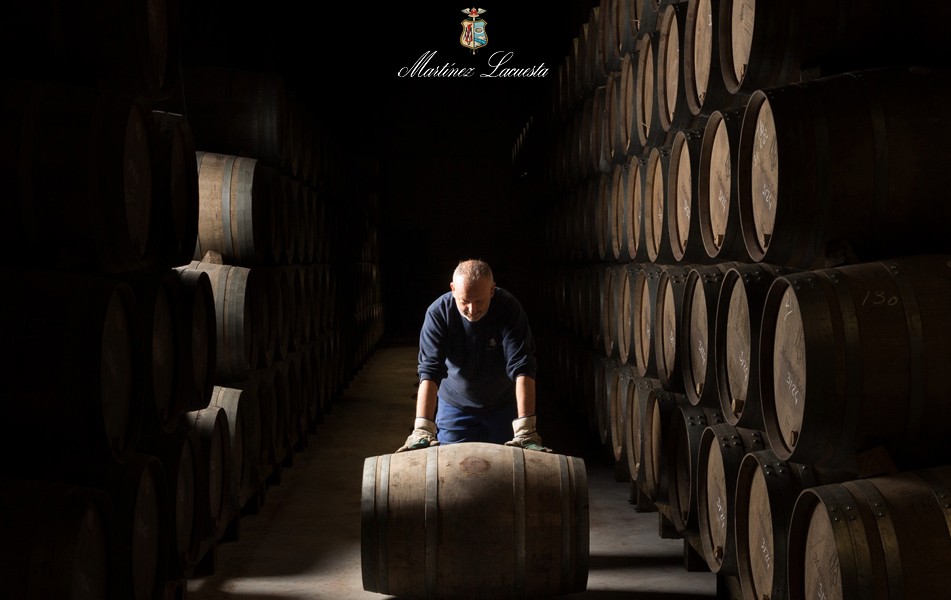Road Rage
“standfirst”>With escalating fuel costs and congestion charges, not to mention increasing pressure from consolidating retailers and suppliers, road hauliers are being driven to distraction, says Chris Orr
When the last budget emerged from the august office of the chancellor of the exchequer, the wine trade was understandably up in arms over the increase in duty of some 4p per bottle. Tirades were hurled, rants were proffered and general indignation abounded – and quite rightly so. It took the price per bottle in duty terms from £1.23 to £1.27, a rise of almost 3% per bottle. Within days, prices in supermarkets had risen by at least 2p and in many cases the full 4p, though those at the crucial £4.99 point quickly dropped back from the new £5.03 price tag as contracts were renegotiated and the big players in retail put the squeeze on suppliers.
In total, it means that duty represents some 31% of the price of a bottle of wine in the UK (£3.98). However, while we were all bemoaning the cost of the duty rise on bottles of wine, the chancellor was stiffing it to the wine trade in other ways too. Only they seem to have gone unnoticed. As he froze duty on spirits and sparkling wines, seemingly an act of immense generosity, he also announced a rise in the rate of duty on diesel of 1.22 pence per litre, though it was not to be activated until September 2005. The sound of silence from the wine trade was deafening. The protests from those involved in the distribution and logistics business around the country were loud and clear – and were encapsulated in the following extract from a letter sent in April by the Road Hauliers Association (RHA) to John Healey, economic secretary to the Treasury: “We call] on you to introduce a fuel price regulator to bring stability to the price of diesel used by road freight operators. We appreciate you do not control world oil prices, but you do regulate fuel duty which is currently 65% of the fuel price. Therefore, we believe the most expeditious means of achieving this stability would be the swift introduction of a fuel duty rebate system of the type planned for the lorry road user charging scheme.”
Through intense lobbying the RHA had already helped to win a significant concession from the government when it agreed to freeze the duty rise until September this year. But despite the RHA’s best efforts, and the work of others in the haulage and distribution industry, the September deadline appears unlikely to change and the duty increase will go ahead. The impact will be significant.
“From what we understand we can only look forward to even higher prices,” says Roger King, chief executive of the Hauliers Association. “Hauliers struggle to get full compensation from their customers, so every increase places an even greater strain on the company’s viability. The RHA deplores the prospect of the chancellor increasing fuel duty by a further 1.22 pence per litre in September and we will campaign vigorously for its abandonment,” he added.
Fuel hikes
“We understand that the chancellor has shelved the planned September increase due to current high fuel price levels,” says an optimistic David Mawer, joint managing director of FFG Hillebrand. “Nevertheless, the fuel costs in the UK have increased some 10% within the space of the last four months and there is considerable pressure for recovery of this increased cost to the market.”
What the duty rise on diesel illustrates is that distribution and logistics within the drinks business is as financially pressurised as either the retail or supply side – despite the common belief that there are vast savings to be made by tightening the screws on the distribution side of the business. Fuel, for example, accounts for some 6-10% of total costs to the average distribution business and represents one of the single biggest cost factors. Any increase in distribution prices based on fuel hikes is likely to erode supplier margin significantly.
“There is a big focus on improving distribution costs and supply chain and logistics costs in the industry at the moment, and quite rightly so,” says Jeff Stanton, chief executive of the CERT Group, which, through its subsidiary, Octavian, handles more than 14m cases of wine a year in the UK. “There is massive consolidation in the industry and suppliers are looking to find the most effective, efficient and low-cost, high service distribution and logistics network they can. It’s only logical that, as they come under pressure from the retailers on margin, they should look to create and add value to their product any way they can,” says Stanton.
“Fuel is perhaps one of our biggest single costs of doing business, so it’s no surprise that any rise in fuel costs has a significant and negative impact,” he says.
But there are others. Increased health and safety legislation is one, new restrictions like the congestion zone another. “I think part of the problem is that it’s a little like taking one step forward followed by one step back,” says Stanton. “On the one hand we invest in systems to improve our logistics capability and work on automating as much as possible within the distribution and supply chain to avoid the costs that are involved in manual labour and reduce the inefficiencies.
“You have massive consolidations within the business, where volumes and supply chains are merged, providing obvious positive cost benefits. But then you have increased legislation in areas like health and safety, particularly in the area of manual labour, and that has a negative cost implication. Then there is legislation such as the congestion zone, which is a classic double-edged sword. On the one hand it frees up traffic, allowing you to increase the volume of deliveries across a shorter time span. Yet the daily cost per van or delivery vehicle is rising, so yet more cost is being incurred.”
Eric Wright, operations director, wine and spirits division of Kuehne + Nagel Ltd, says, “Despite the UK’s congested roads and ports, the congestion charge, red tape, security issues, deception fraud and a multitude of other hurdles, it is still our job to meet customers’ delivery dates and times.”
Decongestant
In the UK, Kuehne + Nagel has introduced feeder ports, like Liverpool, Portbury (Bristol), Grangemouth and Killingholme (Hull) and smaller vessels, allowing imports to arrive closer to the point of delivery. And a recent agreement with EWS (English, Welsh and Scottish Railway) to switch container movements across the UK from road to rail also addresses road and port congestion.
Partner Content
“As an industry I think we are all very much focused on bringing the cost of doing business down for our customers and improving efficiencies,” says Jeremy Pearson, sales and marketing director for London City Bond. “But you have to look as well at the changes that have gone on over the last decade. Our business has essentially transformed from being a simple, straight-forward warehousing service to a complete distribution and logistics solution. Customers are consistently looking to drive down costs and get financial savings out of the supply chain. We can help with that, but obviously we have costs in our business that impact too. For example, we are now doing a lot of crossdocking, which is where we ship in 45TEU (Twentyfoot Equivalent Unit) containers, land them at Tilbury, then break them up for distribution. The 45TEU container is too heavy for UK road systems, but by shipping in these containers – and often combining customers’ orders – we can achieve positive cost benefits.”
Taking orders
Similarly at the export end STI Internazionale, an independent Italian freight forwarder based in the Verona area, can consolidate orders into one bulk delivery, simplifying inbound booking procedures and also allowing consistent savings, especially on smaller orders.
“In the last couple of years, on the New-World trade lanes in particular, costs have risen repeatedly and significantly,” says Hillebrand’s Mawer. “The challenge has been to keep pace with these cost increases and to try to maintain stability in our pricing to customers, which has traditionally been of significant value to the trade in managing their pricing.”
Richard Sharrock, director of Schenker Wine Division sees the current difficulties as an opportunity. “Our relationship with ocean carriers enables us to negotiate competitive rates from New World sources to mitigate some of the fuelfuelled increases. But the continuing shortage of quality European hauliers, on the other hand, will inevitably entail significant rate increases over the next year as the equation between price and competence becomes more evident and compelling.”
Many believe that with consolidation in both the retail and the supplier sector, together with increased costs, the distribution and logistics industry is increasingly becoming closed to smaller and medium-sized players. “The wine companies and retailers are getting larger and larger,” comments City Bond’s Pearson. “And in order to service them from a distribution point of view you need the capabilities to deal with significant volumes. Last year we saw more than 18m cases of goods pass through our warehouses. To handle that kind of level of trade you have to have the systems and technology to back it up and constantly keep it updated. So, for instance, all our drivers have mobiles that we can track so we can keep a real time picture of where they are at any moment. That’s what the customer demands these days and you have to provide it.”
According to specialist logistics company Exel, “It is absolutely essential for customers to understand their levels of stock holdings and be able to track product movements. By allowing customers this visibility they can reduce stockholdings and warehousing space, thereby increasing cost savings and value across their supply chain.”
But there are limits to the effect that consolidation will have on certain parts of the distribution sector. “We are facing similar pressures from the retailers and customers who are trying hard to gain cost-savings and benefit from their size and volume,” points out Graham Donald, marketing director for Matthew Clark, the UK’s largest distributor to the ontrade, handling 21m cases a year through more than 20,000 outlets. “But it’s not always as simple as it sounds, and it very much depends on the type of business that you’re in. If you take the wholesale distribution business, for example, the margins in this sector of the trade are pretty thin, so you have to work incredibly hard to make sure that this side of the business is profitable. It’s an exceptionally fine balance.
“I think when it comes to increased fuel and legislative and administrative costs, one has to be optimistic and hope that in the relatively near future these are going to stabilise and prove less erratic or unpredictable. In the meantime, you have to do as much as possible to create a lean, mean operation,” says Donald.
But he doesn’t believe the benefits of consolidation are as easy to apply to the ontrade sector as they are to the retail sector. He cites JD Wetherspoon as a good example. “They are working on consolidating all their stock into a central warehousing facility and distributing both food and liquid stock from a central source. They are in the early days of a centrally warehoused model and are heading down a similar route to many of the multiple retailers. Previously we would have supplied to individual sites,” Donald explains, “but while this has many benefits, there also some issues. The economies of scale are a lot more difficult to achieve. And also when you look at the basic logistics it’s not straightforward to execute. For a start the infrastructure of pubs, bars and hotels tends to be on the small side. It’s not like in a supermarket where dozens of cages containing shelf-ready stock can be racked off straight into a warehouse.
“With pubs and hotels you have access difficulties. Storage tends to be in multiple areas on-site, so requires more manual handling. To gain the ultimate cost benefits from this type of system, you really need to see changes in infrastructure,” he adds.
Graham agrees with Pearson and Stanton when it comes to additional costs of doing business. “I think people don’t realise that the distribution industry is undergoing significant change. On the one hand we are improving systems, technology, transparency and efficiencies rapidly. But as we grow and develop in a modern sense, we are also being subjected to more costs, usually at the hands of government. And sometimes it’s the most mundane things that have a significant impact.”
As an example, he cites the good old parking ticket. “Most people tend to forget how much of a cost basis this is for us. If you take central London it’s almost impossible to make deliveries without incurring an unnatural level of parking tickets. Obviously, we appeal those we feel are uncalled for, but at the end of the day, if you have to park on a doubleyellow line to make a delivery you have to do it. And that’s a cost the company foots – and that’s a cost that effects the bottom line and is a legitimate, if intensely irritating, cost of doing business.”
The “cost of doing business,” however, seems to be an increasing challenge for the industry as a whole. With the pressure being brought to bear on the distribution and logistics sector – mainly thanks to major consolidation in both the supplier and retailer sector, the big question seems to be, how long before consolidation becomes an issue for the distribution and logistics sector itself? Past experience would suggest not long at all.




